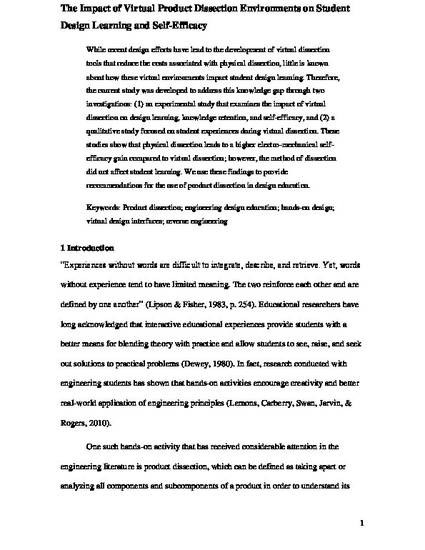
While recent design efforts have lead to the development of virtual dissection tools that reduce the costs associated with physical dissection, little is known about how these virtual environments impact student design learning. Therefore, the current study was developed to address this knowledge gap through two investigations: (1) an experimental study that examines the impact of virtual dissection on design learning, knowledge retention, and self-efficacy, and (2) a qualitative study focused on student experiences during virtual dissection. These studies show that physical dissection leads to a higher electro-mechanical self-efficacy gain compared to virtual dissection; however, the method of dissection did not affect student learning. We use these findings to provide recommendations for the use of product dissection in design education.

This is an Accepted Manuscript of an article published by Taylor & Francis in Journal of Engineering Design on 7 April 2015, available online: https://doi.org/10.1080/09544828.2015.1018149.